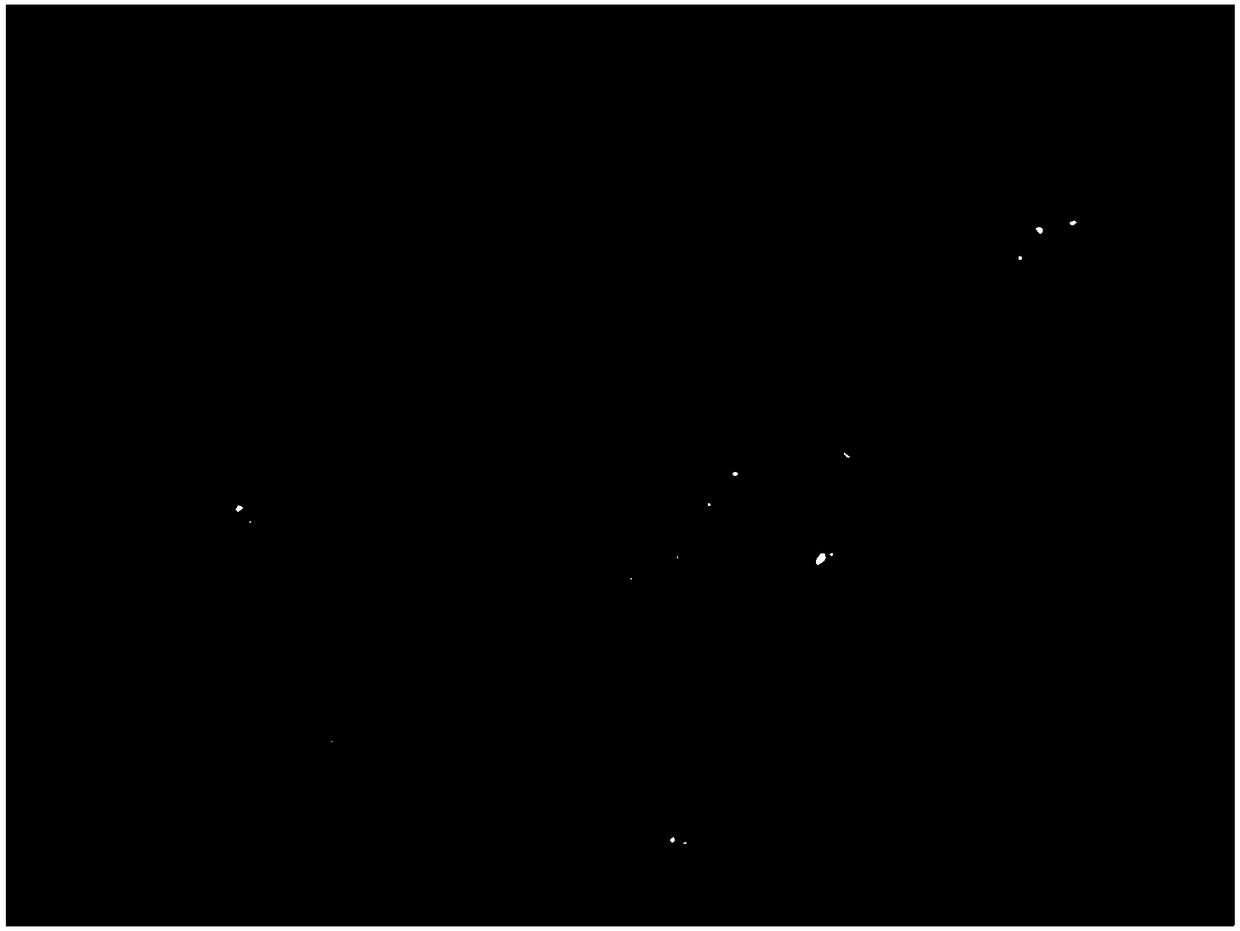A kit for the detection of non-small cell lung cancer based on liquid biopsy
A technology of non-small cell lung cancer and liquid biopsy, which is applied in the direction of measuring devices, preparation of test samples, material excitation analysis, etc., can solve the problems of weak fluorescence intensity, difficult to distinguish, missed detection, etc., to achieve simple methods, easy to distinguish, The effect of high enrichment efficiency
- Summary
- Abstract
- Description
- Claims
- Application Information
AI Technical Summary
Problems solved by technology
Method used
Image
Examples
Embodiment 1
[0055] Example 1 Enrichment of target cells in peripheral blood
[0056] (1) Centrifuge the peripheral blood of normal people to remove plasma protein: put 8.5mL of peripheral blood in a horizontal centrifuge at 800g, centrifuge at room temperature for 7min, and discard the supernatant.
[0057] (2) Add 5-6 mL of PBS buffer solution and 3 mL of lymphocyte separation solution to the plasma in step (1), centrifuge at 450 g in a centrifuge for 7 minutes at room temperature. After centrifugation, it is divided into three layers. The red bottom layer is the erythrocyte layer, the slightly white middle layer is mainly white blood cells and CTC, etc., and the yellow upper layer is plasma. Absorb all the liquid above the erythrocyte layer and remove the bottom erythrocyte layer.
[0058] (3) Add 200 mL of immunomagnetic beads with CD45 antibody coupled to the surface dropwise in step (2), and incubate on a horizontal shaker to obtain a suspension. At room temperature, shake horizonta...
Embodiment 2
[0060] Example 2 Fluorescent staining of enriched target cells
[0061] (1) Enhanced staining pretreatment: Add 2 μL of staining enhancement solution to about 50 μL of enriched target cells, and let stand at room temperature for 10 min. The staining enhancing solution is SDS (sodium dodecylsulfonate) or Triton X-100 in PBS buffer solution, and the concentration of SDS is 0.1 mg / mL.
[0062] (2) Cell surface staining: Dilute 1 μL each of CD45-Alexa 594, EGFR-Alexa 488, and Folate-CY5 with 197 μL of PBS buffer, add to the cell suspension after pretreatment in step (1), and then avoid Incubate with light for 20min. After incubation, add PBS buffer to wash the cell liquid, centrifuge at 950g for 4min, and remove the supernatant to 100μL.
[0063] (3) Cell fixation: transfer and smear the cells in step (2) onto a glass slide, then add the fixative paraformaldehyde, fix for 10 min, and wash the slide twice with PBS buffer, 5 min each time.
[0064] (4) Fluorescent in situ hybridi...
Embodiment 3
[0066] Example 3 Fluorescence staining detection of Calu-1 human lung cancer cell line
[0067] Calu-1 cells (purchased from the Cell Bank of the Chinese Academy of Sciences) were enzymatically digested and 10 5Cells, approximately 50 μL, were subjected to fluorescent staining and fluorescent microscope examination on the cell surface according to the steps in Example 2. Microscopic examination conditions are as follows: when the excitation light wavelength is 591nm, Alexa594 emits 618nm red light, and the exposure time is 100ms; when the excitation light wavelength is 650nm, CY5 emits 670nm far-red light (invisible to the naked eye, and the microscope scanning is assigned purple). The time is 100ms; when the excitation light wavelength is 499nm, Alexa488 emits 519nm green light, and the exposure time is 100ms; when the excitation light wavelength is 345nm, DAPI emits 455nm blue light, and the exposure time is 10-20ms, the results are as follows figure 1 shown.
[0068] The ...
PUM
 Login to View More
Login to View More Abstract
Description
Claims
Application Information
 Login to View More
Login to View More - R&D
- Intellectual Property
- Life Sciences
- Materials
- Tech Scout
- Unparalleled Data Quality
- Higher Quality Content
- 60% Fewer Hallucinations
Browse by: Latest US Patents, China's latest patents, Technical Efficacy Thesaurus, Application Domain, Technology Topic, Popular Technical Reports.
© 2025 PatSnap. All rights reserved.Legal|Privacy policy|Modern Slavery Act Transparency Statement|Sitemap|About US| Contact US: help@patsnap.com


